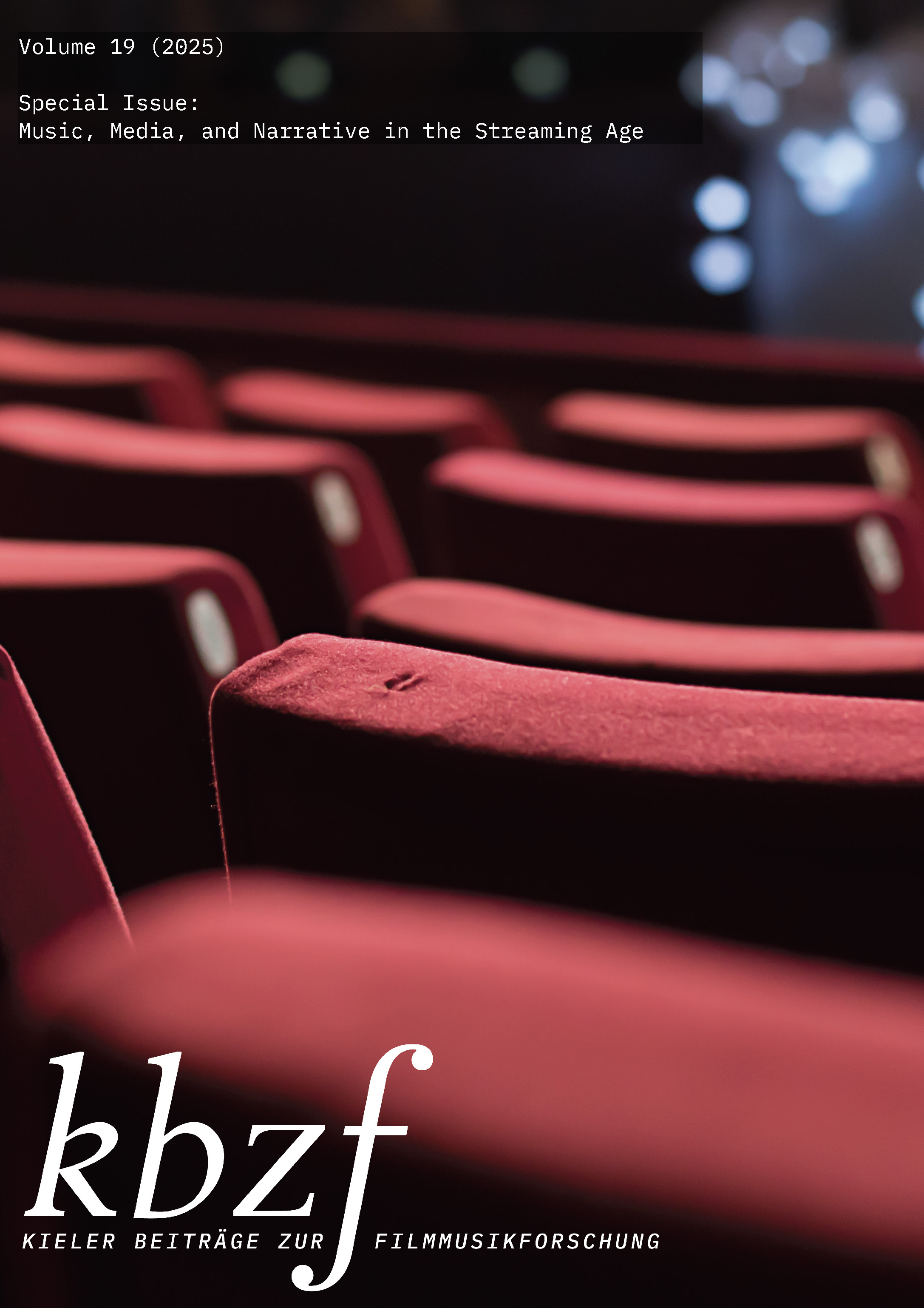Rattling Bones in the Danse macabre from Saint-Saëns to Tim Burton
DOI:
https://doi.org/10.59056/kbzf.2025.19.p118-135Schlagworte:
Dance of the Death, animation, Disney, Totentanz, AnimationsfilmAbstract
The Dance of Death (or danse macabre) is not exclusively the intimate dance between the dying person and personified death in music and media. The (un)dead often dance among themselves by using their skeletal remains, an idea that opens up special musical possibilities. Since bones themselves have percussive sound qualities, hence their usage as material for musical instruments, the musical setting of such figures particularly invited timbral mimesis. With percussion and the percussive playing style of other instruments, dances of death have rattled across all genres since Saint-Saënsʼ Danse macabre at the latest. Animation films and cartoons in particular have been very keen to continue and renew the topic of the danse macabre and its musical tradition. Walt Disneyʼs THE SKELETON DANCE (1929) significantly influenced the associated imaginative use of the image-sound relationship. When CORPSE BRIDE was released in 2005, director Tim Burton and composer Danny Elfman were able to build on a 100-year-old tradition of dancing skeletons in film and music, which they did with a lot of humor and ingenuity. This article takes a historical look at the musical-cinematic trope to analyze a selected scene from CORPSE BRIDE in more detail.
Der Totentanz (auch danse macabre) begegnet in Musik und Film nicht nur als Paartanz des Sterbenden mit einem personifizierten Tod. (Un-)tote tanzen auch unter sich, meist in Gestalt von Skeletten – eine Idee, die musikalische Möglichkeiten birgt. Da Knochen für sich genommen perkussive Klangeigenschaften haben, daher auch ihr Gebrauch im Instrumentenbau, lädt die Vertonung solcher Figuren besonders zur klanglichen Nachahmung ein. Mit Schlagwerk und perkussiver Spielweise anderer Instrumente klappern sich Totentänze, spätestens seit Saint-Saënsʼ Danse macabre, durch die Genres. Besonders Animations- und Zeichentrickfilme waren bemüht diesen Topos weiterleben zu lassen. Walt Disneys THE SKELETON DANCE (1929) war maßgeblich für den damit assoziierten Umgang in der Bild-Ton-Beziehung. Als CORPSE BRIDE 2005 erschien, konnten Tim Burton und Komponist Danny Elfman an einer über hundertjährigen Tradition anknüpfen, was sie mit viel Witz taten. Dieser Artikel wirft einen Blick auf die Geschichte des musikalisch-cinematischen Topos des Totentanzes, um anschließend eine Szene aus CORPSE BRIDE genauer zu analysieren.
Downloads
Veröffentlicht
Ausgabe
Rubrik
Lizenz
Copyright (c) 2025 Tabea Umbreit

Dieses Werk steht unter der Lizenz Creative Commons Namensnennung 4.0 International.

